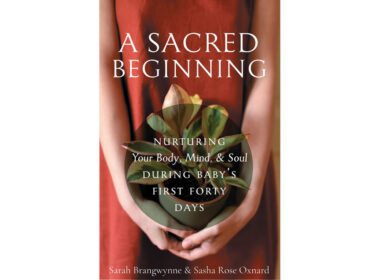Your menstrual cycle is a personal and nuanced experience, so choosing the app or tracking method that works best for you is an important step in understanding your body. That being said, it can be tricky to navigate the world of femtech when there are countless apps–each with its own methodology, philosophy, and features—to choose from.
One relatively new name in the femtech scene is 28. Launched in 2022, the innovative app features a wellness-centered approach to women’s health that’s a breath of fresh air. But while its methodology and emphasis on actionable wellness is fresh and fun, it’s important to note that using the app should not replace FAM tracking practices.
About 28
28’s approach to menstrual health stems from the idea that a woman’s body has different physical and nutritional needs depending on where she’s at in her cycle. The app divides the menstrual cycle into four phases: “Restore” (menstruation), “Awaken” (follicular), “Perform” (ovulatory), and “Balance” (luteal). Within each phase, users have access to workouts, nutrition information, and interesting insights about that specific phase, all with the goal of regulating the user’s hormones for a healthier cycle. According to the app’s website, 28’s mission is to “demystify and destigmatize menstrual health by enabling women to embrace their feminine nature, not fight it.”
Why 28 is Useful
While it’s true that 28 can’t replace FAM practices for reasons we’ll delve into later, it can still be a useful tool for menstrual wellness. Let’s explore why.
For starters, the app is an incredible value since most of its features are included in the free subscription. That means in addition to symptom logging and basic period tracking, users have access to workouts, thoughtful insights, and nutritional recommendations–all at no cost. An annual paid subscription–which features recipes and grocery lists for each phase–is priced at $90.
Personally, my favorite feature of 28 is the workouts. Each phase includes 6-12 trainer-led exercise videos ranging in intensity and duration. The workouts are designed for your body’s specific needs during each part of your cycle. For instance, workouts in the “Perform” (ovulatory) phase include high-intensity kickboxing to capitalize on the burst of energy you might be experiencing at that time, while a “Restore” (menstruation) workout might focus on stretching the pelvis and hips to relieve extra tension during your period. Most of the workouts are 20-30 minutes, a perfect way to get some movement during your day without making a huge time commitment. And since there’s no equipment required (with the exception of one workout that recommends small hand weights), you can get in a quality exercise session pretty much anywhere.
The nutrition section of 28 is useful as well. Here you’ll find an overview of which foods can help your body thrive during your current phase, and a brief description of why that food is beneficial. The paid subscription also includes tons of recipes for dishes that benefit your hormones (I was surprised by how many recipes there were–I counted 36 in the “Awaken” phase alone), and comprehensive grocery lists each week that make your hormone-healthy shopping trips that much easier.
Here’s what you likely won’t find inside any other women’s health app
One unique feature that you won’t find on any other women’s health app is 28’s Insights section. Here you’ll find interesting tidbits about what your body is going through hormonally at each particular time in your cycle, and inspiration for how to embrace your feminine energy during your current phase. Obviously take these predictions and suggestions with a grain of salt: Just because you’re in your follicular phase doesn’t mean you’ll be outgoing and even-keeled every moment of the day like the insights may claim–but they’re a fun and educational feature nonetheless.
Additionally, the app has a beautiful aesthetic. Its use of bright images and stunning photographs of actual women is a refreshing departure from the cartoonish or “gender bending” images that many femtech apps rely on. That being said, one thing I appreciate most about 28 is its emphasis on celebrating femininity–which, ironically, many femtech apps fail to do in their pursuit of inclusivity. From its graceful imagery to its insights on how to embrace your feminine spirit throughout your cycle, there’s no doubt that 28 is one hundred percent, unapologetically made for women–and we love that!
Areas to Improve
App should let you tell it when you’re fertile, not the other way around
28’s biggest area for improvement is cycle monitoring. In its predictive Rhythm Method-like approach, the app tells you when ovulation and menstruation is “supposed to” occur. This is derived from algorithms and averages, as opposed to letting you enter your own cycle information based on what your body is actually doing.
28’s biggest area for improvement is cycle monitoring. In its predictive Rhythm Method-like approach, the app tells you when ovulation and menstruation is “supposed to” occur. This is derived from algorithms and averages, as opposed to letting you enter your own cycle information based on what your body is actually doing.
Even the most regular of cycles can go off track some months due to illness, use of medication, increased stress levels, a change in diet, or any other situation that may disrupt the delicate balance of our hormones. For that reason, predictive apps like 28 can only give a ballpark estimate of a users’ fertile window.
28 is not a standalone family planning method
Because of its predictive nature, using the 28 app should not be your only tool for cycle tracking, especially if your goal is family planning. That’s mostly because using 28 won’t give you a true idea of when you’re actually ovulating. From a personal standpoint, the “Perform” phase in the app did not align with when my body actually ovulated. I typically ovulate earlier in my cycle than the “standard” day 14. So when I checked the app on the day I was almost certainly ovulating based on cervical mucus and other markers, the app indicated I was still two days away from my fertile window. If I had been keeping track of my cycle solely using 28’s algorithms and averages instead of focusing on what my body was actually telling me, I would have never known when I was actually ovulating–which would have made my tracking goals impossible.
App needs functionality to specify what cycle phase you’re in
There’s also no way to manually adjust where you’re at in your cycle in the app. So, in my case where I knew I had already ovulated because of my cycle biomarker observations, I would have liked to skip ahead to the luteal phase for workouts and insights applicable to what was really going on in my body. But that’s not possible in the app, unless I were to go in my profile and manipulate the cycle length, thereby throwing off all of my information. The ability to override the algorithm and tell the app which phase my body is in would be a welcome update!
To be fair, the app never claims to be a cycle tracker. Rather, 28 might most accurately be categorized as a fitness and nutrition app that references the user’s menstrual cycle for optimal health results.
Rather, 28 might most accurately be categorized as a fitness and nutrition app that references the user’s menstrual cycle for optimal health results.
And while recent app improvements help users track their symptoms such as cervical mucus, cramping and bloating, emotions, blood flow, and sex drive, the app still relies on the Rhythm Method to tell you where you are in your cycle. So it’s still up to users to keep track of these symptoms separately from the app in order to understand their unique cycle.
The bottom line
28’s approach to women’s hormone health is a breath of fresh air. It inspires users to embrace femininity and encourages them to connect with their bodies in a mindful way through diet and exercise that aligns with their cycle phases.
That being said, the app should not be relied upon for family planning. If you’re trying to get pregnant, or trying to prevent pregnancy, only use 28 in conjunction with an official method of fertility awareness or natural family planning. Due to its predictive nature, your ovulation phase will be incorrect in 28 more often than not–which will set your entire cycle tracker off kilter.
Perhaps instead of considering 28 a cycle tracker, think of it as a fitness and nutrition app that attempts to correlate with your menstrual cycle. The diet, workouts, and insights can be helpful if you know what phase you’re actually in, but don’t rely on the app to tell you what phase you’re in. After all, you have the ability to know your body better than any app ever could.
Additional Reading:
Cycle Syncing: How to hack the natural hormonal shifts of your menstrual cycle











